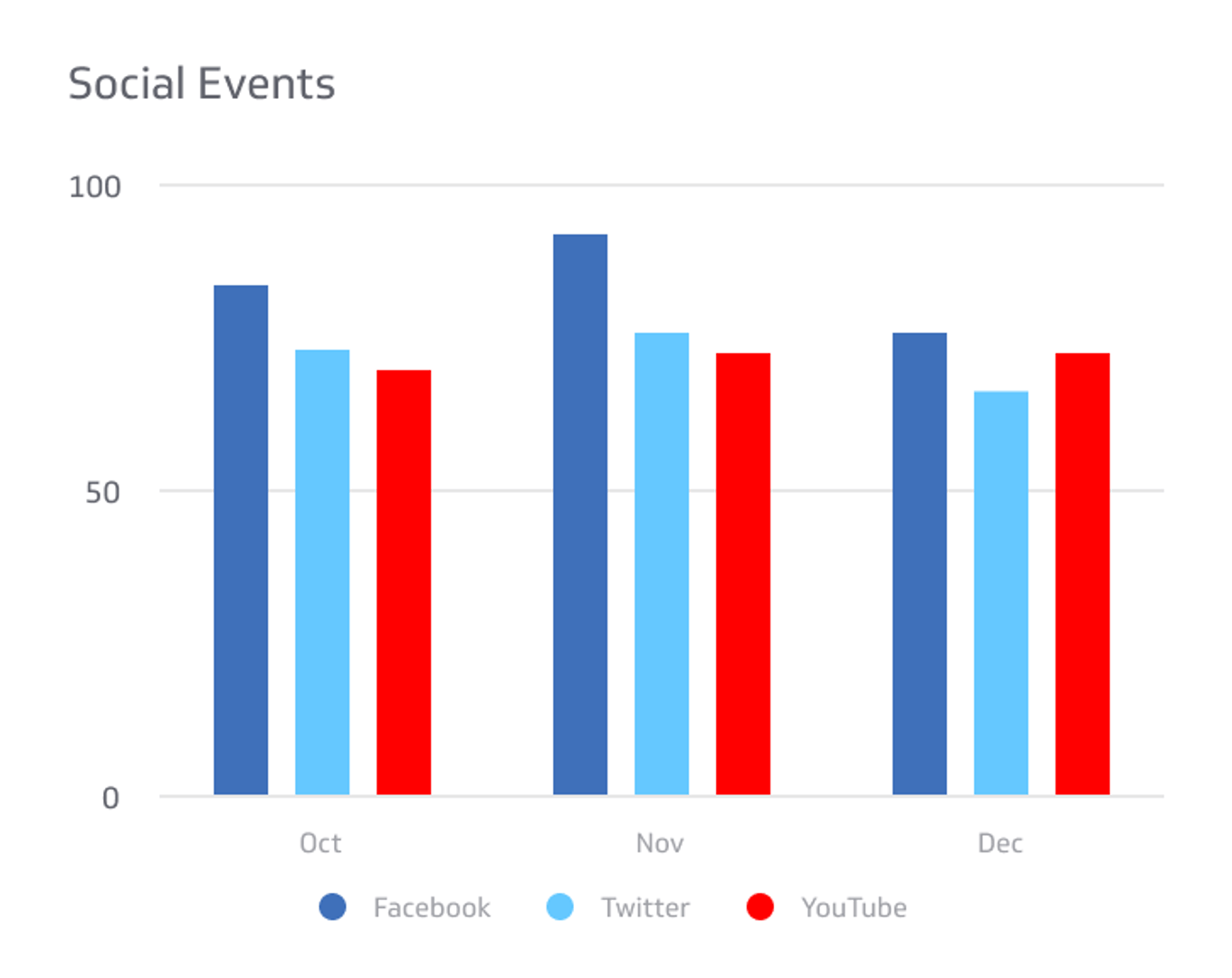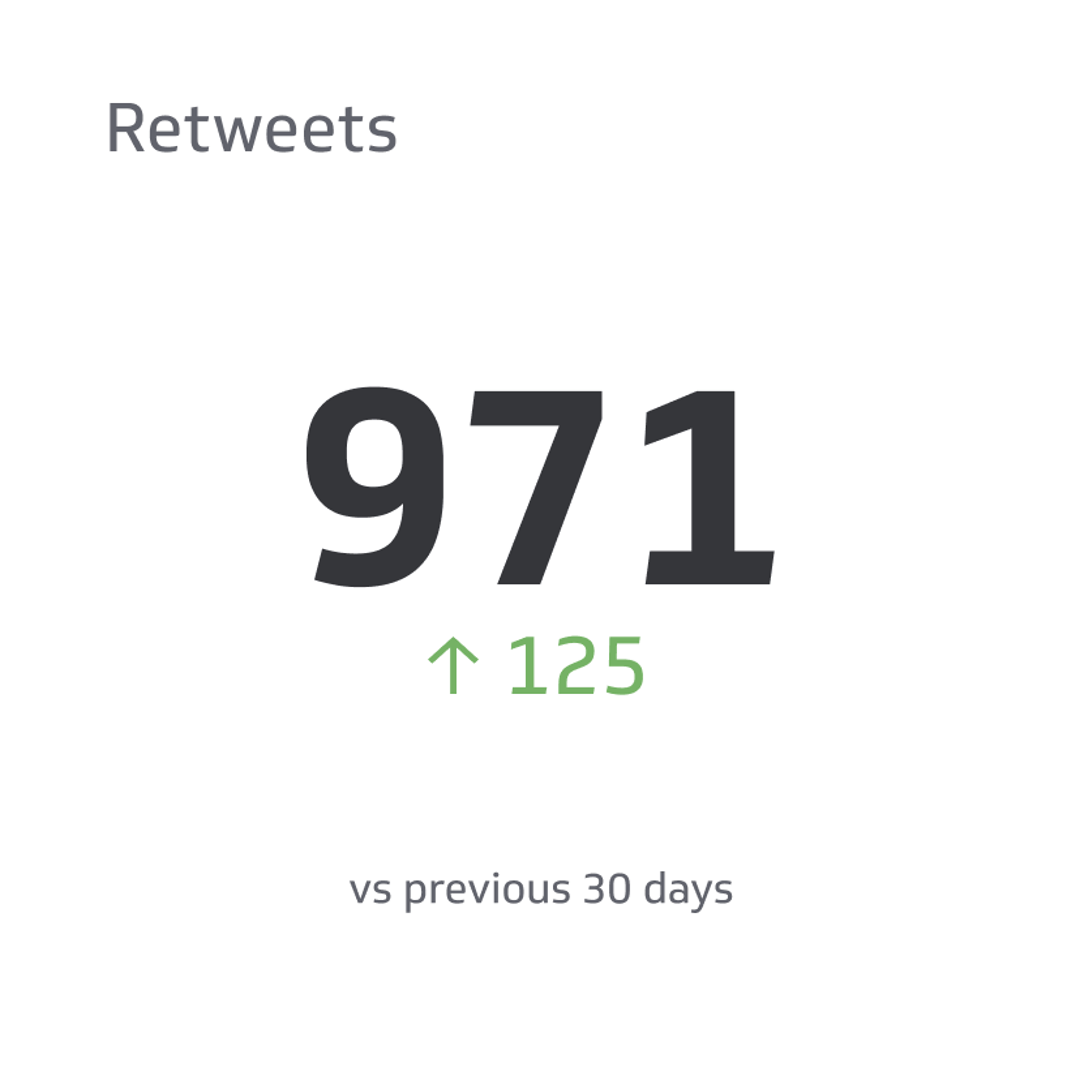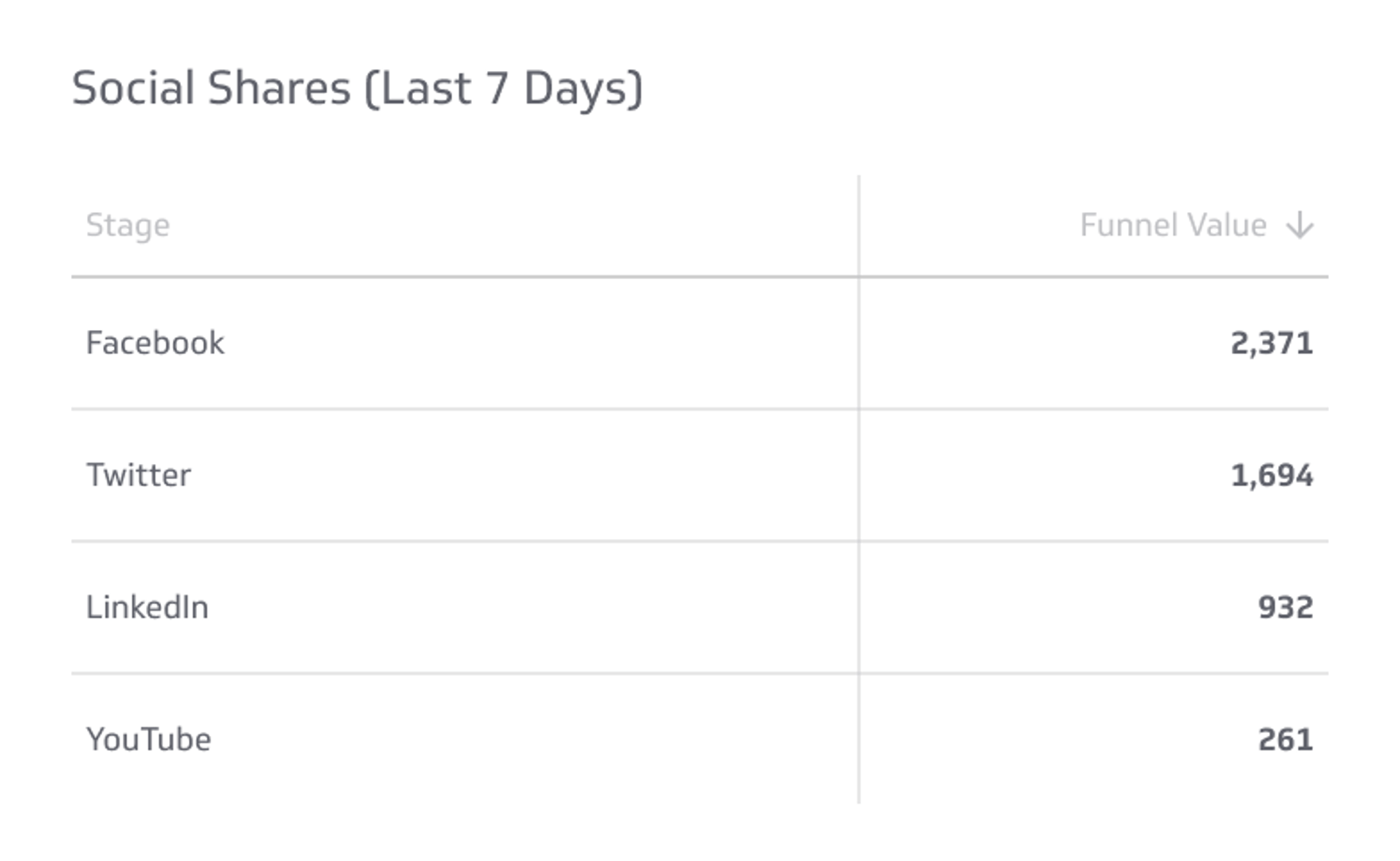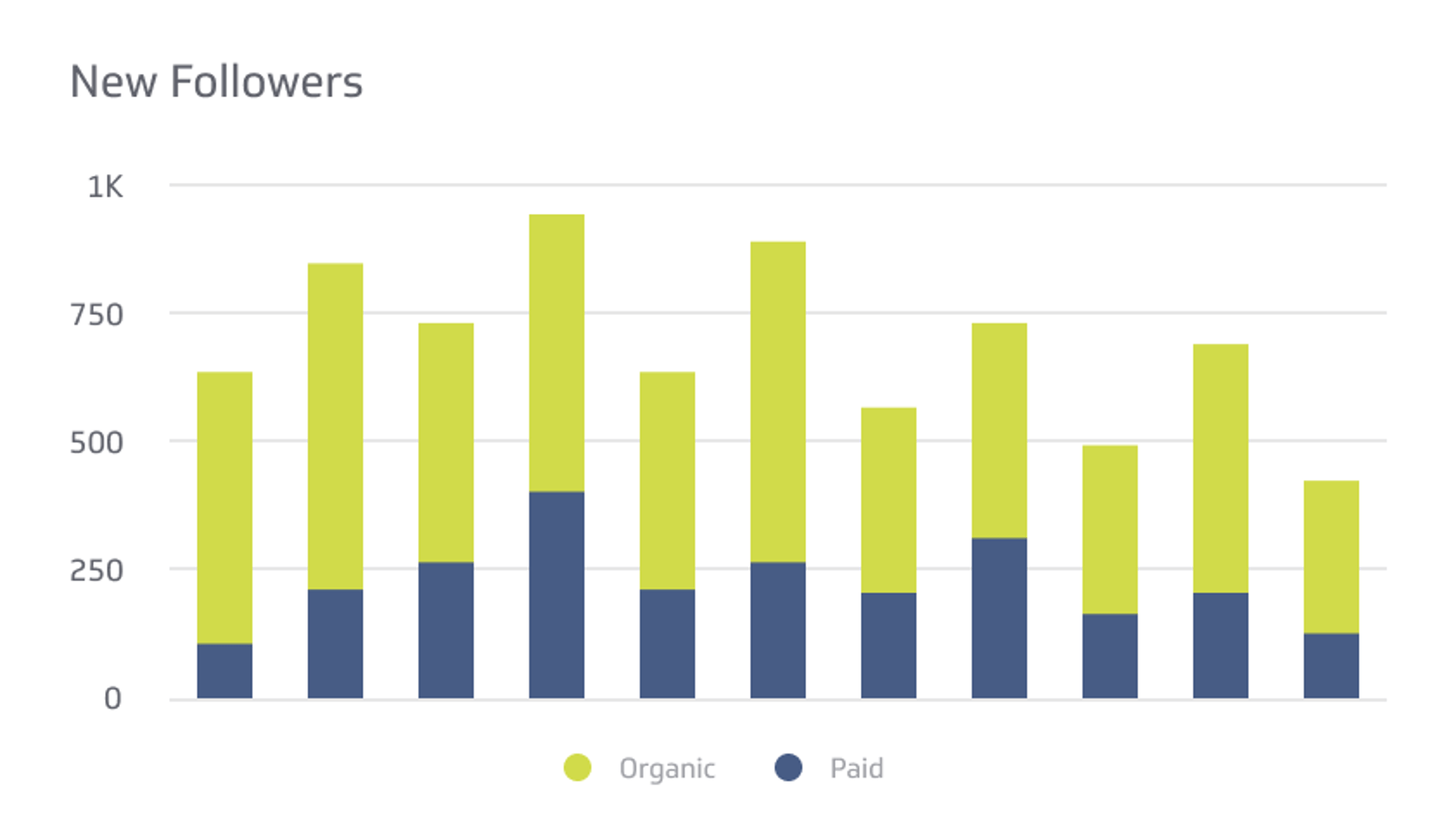Social Events Metric
Monitor events on your social stream to nurture engagement and grow your audience.
Track all your Social Media KPIs in one place
Sign up for free and start making decisions for your business with confidence.

Social Events Definition
The Social Events metric monitors events on your social mediastreams such as likes, reposts, and mentions to help you nurture engagements and grow your audience. To effectively measure the value of social events, you need to define which social platforms are important to your marketing efforts and which types of engagements are valuable.
Each social platform has its own unique brand of interactions: Twitter has favourites, retweets, and mentions; Facebook has Likes and shares; Google+ has +1's and mentions. Each type of interaction differs in significance from a marketing perspective. For instance, one could argue that a favorited Tweet is less valuable than a retweeted Tweet because a favourite only signals agreement with the message, whereas a retweet rebroadcasts the information to a new audience increasing the reach of the original message.
Key Terms
- Social events: Interactions that indicate your audience is engaging with your brand on a specific platform.
- Referral traffic: People that visit your site by clicking on a URL on another website, such as a social media post.
- Conversions/goals: A marketing objective for your audience to complete, such as subscribing to a mailing list.
Success Indicators
- A high number of quality interactions.
Social Events Challenges
Brewster Stanislaw, CEO, Inside Social
Maybe the biggest challenge in giving social the credit it deserves is breaking through dark social. Jay highlights this problem in his blog post, but dark social is not just limited to this ubiquitous link sharing that happens among followers, friends, and family. Dark social has become an increasingly large problem due to mobile applications.
The key reason why? Mobile applications do not provide a referrer. Perhaps over time deep linking will solve this, but for now it is a huge problem. If you have done an excellent job of parameter tracking for both your own posts and ads and those of your fans, you won’t rely on referrer analysis as much.
Social Events Best Practices
Social events and engagement need to relate back your marketing and business objectives; each social event should be evaluated based on its ability to contribute to these objectives. One way of demonstrating the value of social events is to assign each type of interaction with a weighted value. For example, you may assign a Retweet a value of "1" while giving a Favourite a value of "0.5". Every organization is different, of course, so make sure to analyze which types of social interactions are generating website traffic and leads. The following is some expert advice to keep in mind while creating and tracking your Social Events KPI:
Jon Henshaw, Raven Internet Marketing Tools
- Get everyone on the same page. The best way to set up goals and events is to decide as a group the nomenclature you’re going to use. For example, you may decide to call the Event Category for all calls-to-action, CTA. And for the Event Action, you may want to use the term click for anyone who clicks on a CTA. If your team doesn’t get on the same page, then campaign reporting may become a nightmare.
The number of followers or likes does not equal success. What matters is whether or not your social activity results in making money.
There’s a simple formula to determine the value that social networks provide:
Landing Pages + Goals + Advanced Segments (Social Source) = Value
When you view your landing pages combined with goal conversions, and filter the results to only display landing pages that were viewed from social network referrals, you can then determine your social ROI. You can also get insights into what content works best on different social networks and apply that to your content marketing strategy.
Leverage your referrals. The only thing better than knowing which sites are sending you traffic is discovering which ones are also giving you money.
Referrals + Goals = Opportunity
When you discover referrals that convert, use them as outreach opportunities, because these are the sites that are now proven to send you targeted traffic. Research the pages that are sending traffic and conversions, and then think about how you could increase your exposure on that site. For example, you may want to request to guest blog or consider advertising on the site.
Rachel Sprung, Product Marketing Associate, HubSpot
- Pair social media with other channels. When people approach social media, they immediately try to think of the exact number that can represent ROI. But before you even get to that point, you need to address an important question: What are all of the channels that social media works with to improve ROI? The power of social media doesn’t just lie in a completely new channel to do your marketing. You can actually amplify the results of some of your other channels. Think about how you can pair social media with some of your other channels for improved results in both areas.
How to Monitor Social Events Metric in Real-time
Once you have established benchmarks and targets for Social Events, you’ll want to establish processes for monitoring this and other social media KPIs. Dashboards can be critical in this regard.
Learn more about how to track your Social Events on a Social Media Dashboard.
Social Events Metric: Top Resources
The metrics that matter for SEO and social media, Jon Henshaw
Content Marketing Goals You Should Have, Aaron Agius
How to Prove Your Social Media Impact, Brewster Stanislaw
Social Media ROI Tips, Cindy King
Related Metrics & KPIs



